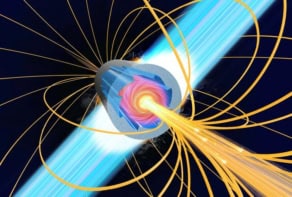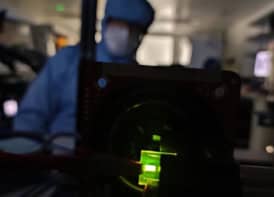Early observations of ‘critical self-focusing’ of laser pulses date back to the mid-1960s. This effect manifests itself as an explosive growth in the laser intensity combined with a severe narrowing of the “waist” of the laser pulses. Now physicists have created for the first time a set of self-focused femtosecond light channels, which could have wide-ranging applications.
Self-focusing occurs at high intensities in transparent media when the refractive index is proportional to the intensity. The change in refractive index causes the medium to act as a lens that focuses the laser – hence the name self-focusing. This lens is the ultimate adaptive-optics element as it responds instantly to the shape of the contracting laser beam and thus continually focuses the light. The range of wavelengths in the pulses also increases and, in extreme cases, this spectral broadening can extend all the way from infrared to ultraviolet wavelengths.
High-power femtosecond laser pulses appear to be unique as they carry very little energy (of the order of a millijoule) and yet can achieve very high peak intensities. In a recent experiment, Stelios Tzortzakis and co-workers at the Ecole Nationale Supérieure de Techniques Avancées in Palaiseau, France, provided direct experimental evidence for the creation of the multiple light channels and showed that they eventually merged into one self-guided focused beam that persisted over long distances (Phys. Rev. Lett. 2001 86 5470).
In the August issue of Physics World, Jerome V Moloney of the University of Arizona, USA, sheds light on the subject.


